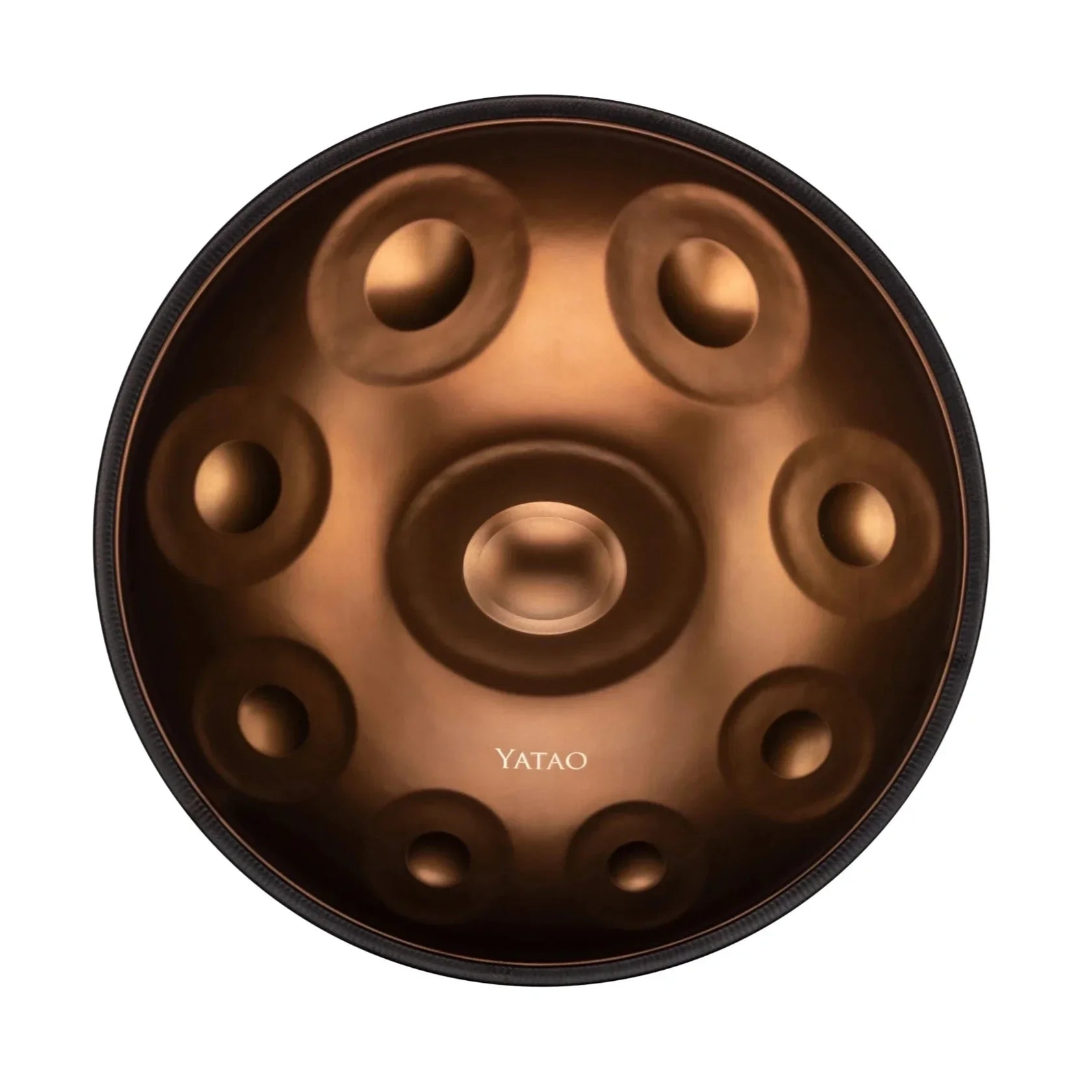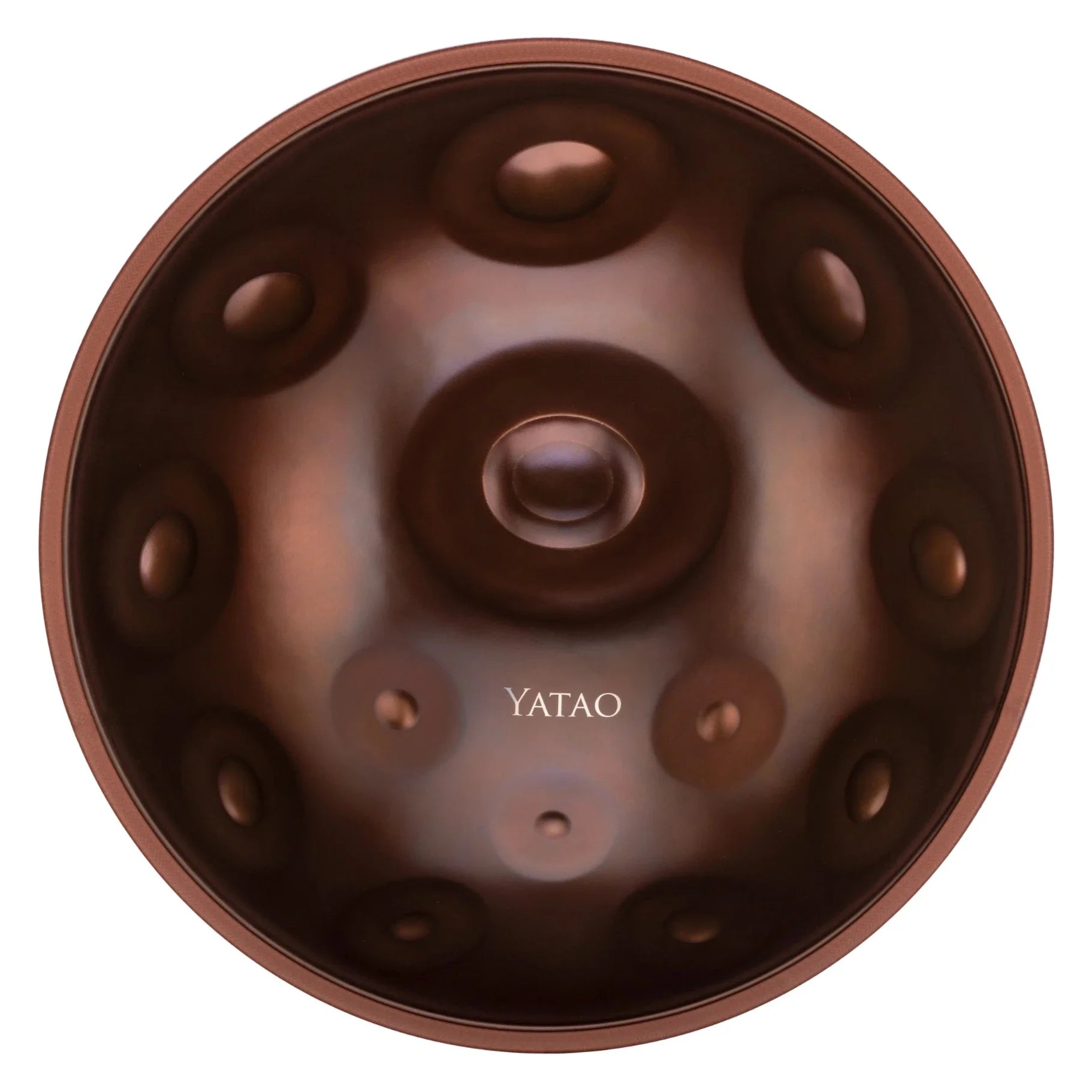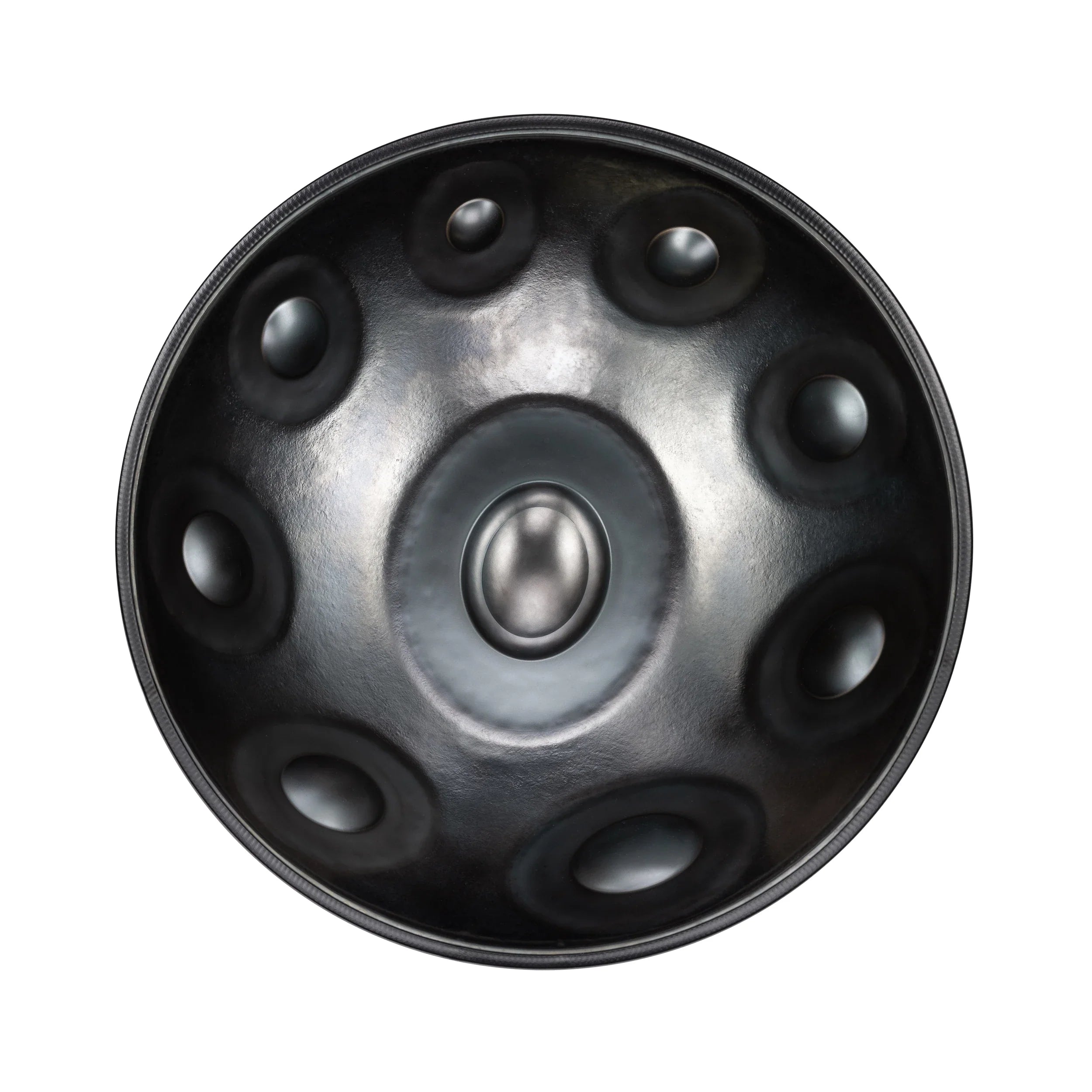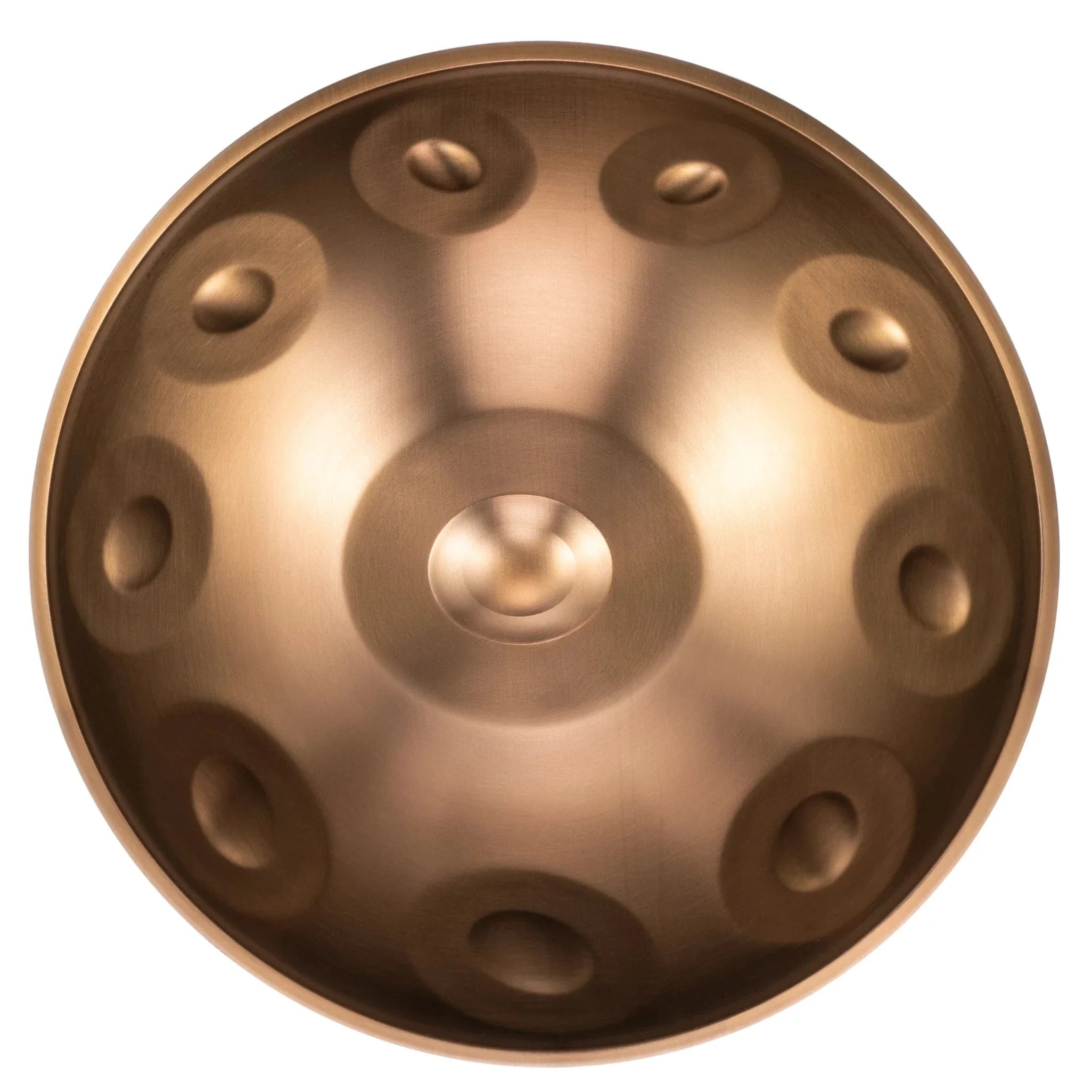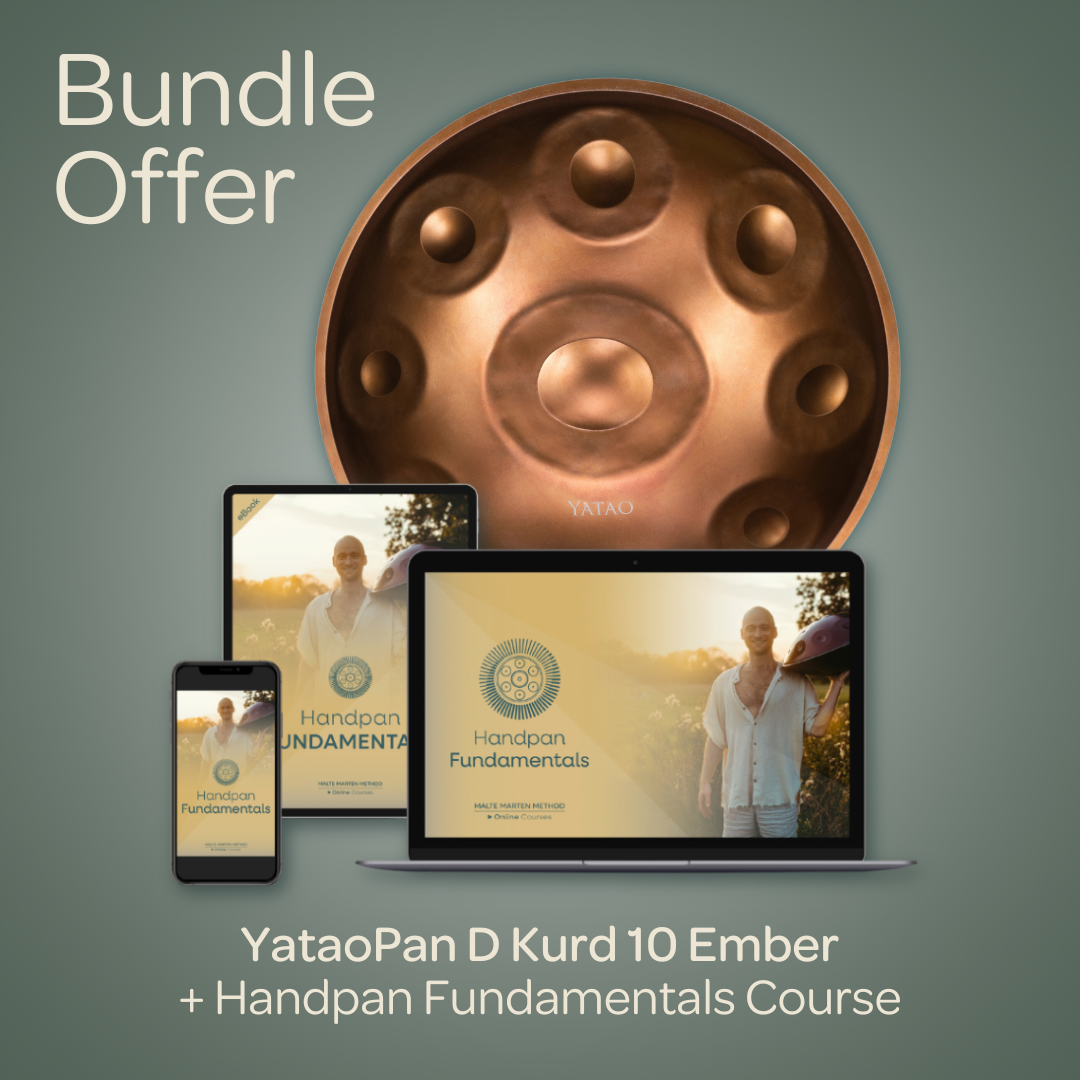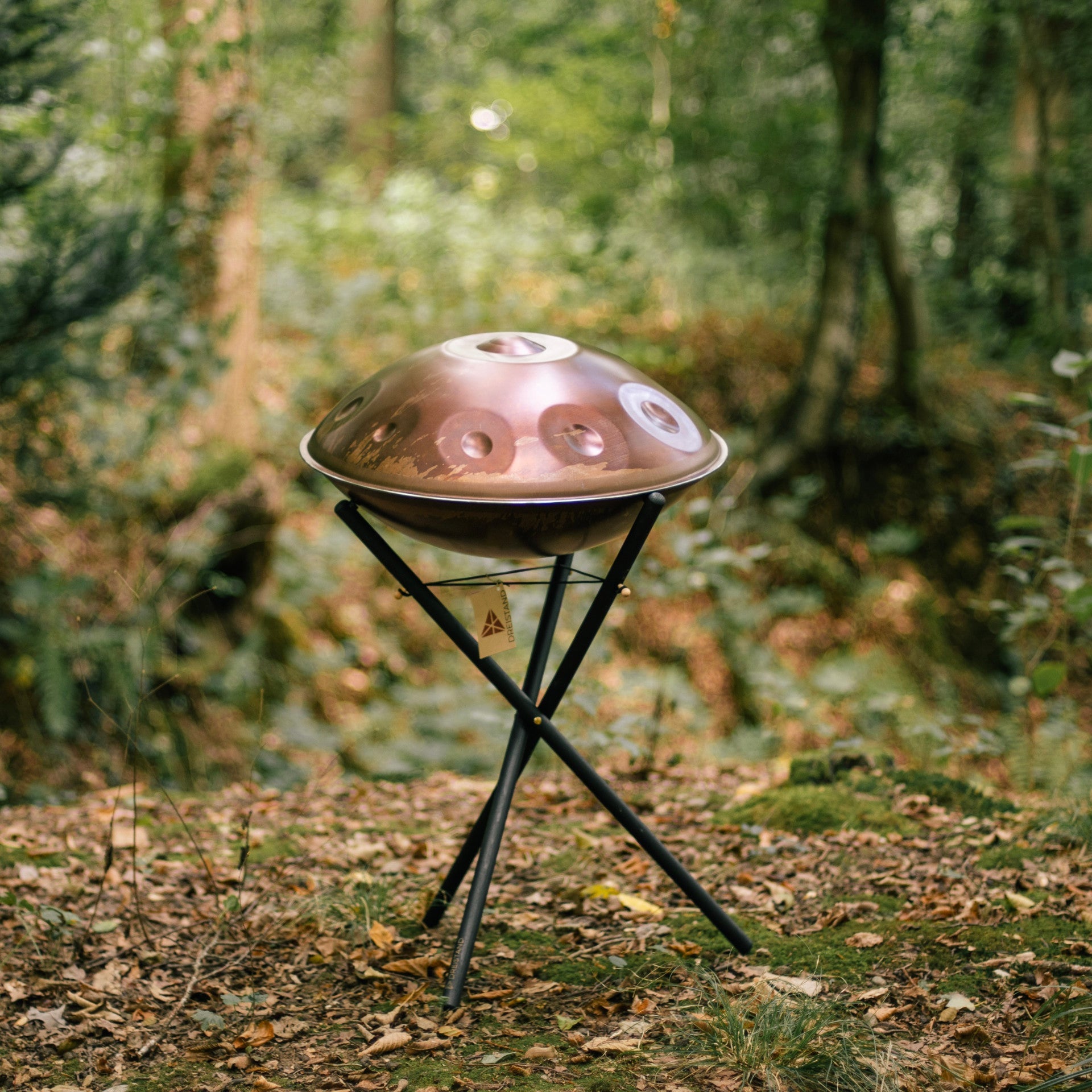Handpan Scales
Find the scale that suits you
Many makers invent their own names for already named scales, thus a jungle of terms has been created, which makes it difficult to understand. Here we list the most common scales and describe them in a few words.
Kurd / Annaziska Handpan Scale – Expressive, Versatile, and Emotionally Rich
The Kurd / Annaziska scale is one of the most versatile minor scales in the handpan world. Praised for its emotional depth and harmonic richness, it gives players the freedom to explore a wide range of musical expressions—from meditative and mystical to bright and uplifting.
-
In D minor, it is commonly called the Kurd scale
-
In C# (C sharp), the same layout is known as Annaziska
Even with just 10 notes, this scale supports up to six full chords, making it an excellent choice for improvisation, melodic storytelling, and emotional expression.
Why Choose the Kurd Scale?
-
Versatile & Expressive – Ideal for playing everything from moody soundscapes to joyful melodies
-
Emotionally Resonant – Rich minor tones that create a deep emotional connection
-
Chord-Rich Layout – Enables complex harmonies, even on smaller handpans
-
Trusted by Professionals – Widely used across genres by experienced handpan players
-
Accessible for All Levels – Easy for beginners to pick up, yet full of depth for advanced musicians
Listen Now: Experience the sound — hear Malte perform on the YataoPan D Kurd 10.
Celtic Minor / Amara Handpan – Intuitive, Harmonious & Beginner-Friendly
The Celtic Minor scale, also known as the Amara scale, draws inspiration from the traditional music of the Celtic world. With its flowing, harmonious sound and emotional warmth, it offers an intuitive playing experience that resonates deeply with both beginners and meditative players.
A key feature of this scale is the absence of the sixth degree, creating a more open, spacious feel that’s easy to explore and improvise with.
Whether you're beginning your handpan journey or expanding your sound palette, the Celtic Minor / Amara scale offers a beautifully accessible way to connect with music and emotion.
Why Choose the Celtic Scale?
-
Rooted in Tradition – Inspired by the rich melodic heritage of Celtic music
-
Popular Tunings – Commonly found in tunings like E Amara, known for their soothing tone
-
Effortless Harmony – The missing sixth note enhances emotional resonance and playability
-
Beginner-Friendly – Simple to learn, easy to improvise, and great for first-time players
-
Mindful & Meditative – Perfect for relaxation, emotional expression, and sound healing
Listen Now: Discover the calming tones of a the E Amara handpan, available in our store.
Pygmy Scale Handpan – Deep, Dreamy, and Meditative
The Pygmy scale is a pentatonic minor scale known for its rich harmonic structure and emotional depth. Characterized by its soft melancholy and dreamlike tone, this scale creates a deeply grounding and meditative atmosphere—perfect for players seeking introspective and soulful expression.
With its simple, forgiving layout, the Pygmy scale allows music to flow naturally, whether you're playing solo, improvising, or layering sound effects.
Why Choose the Pygmy Scale?
-
Pentatonic Minor Simplicity – Naturally harmonic and easy to play across skill levels
-
Emotional Tone – A gentle blend of melancholy, warmth, and dreaminess
-
Meditative & Reflective – Ideal for mindful playing, relaxation, and inner focus
-
Forgiving Layout – Beginner-friendly yet expressive enough for advanced players
-
Great for Sound Design – Works beautifully with layering, reverb, and subtle effects
Watch & Listen: In the video below, Malte performs on a C# Pygmy handpan
Low Pygmy Scale Handpan – Deep, Expressive, and Melodically Unique
The Low Pygmy scale is a deeper, more grounded variation of the classic Pygmy pentatonic minor scale. Unlike the standard layout, the scale begins on the second note around the Ding, offering a distinct melodic structure that invites new musical approaches and phrasing.
With its rich low-end, warm tone, and emotional depth, the Low Pygmy scale is especially suited for expressive, melodic playing. It’s a popular choice among intermediate and advanced players looking to explore beyond the basics and add more resonance and soulfulness to their sound.
Why Choose the Low Pygmy Scale?
-
Deeper Tonal Range – A bass-rich variation of the classic Pygmy scale
-
Unique Note Layout – Starts on the second note around the Ding for a fresh melodic approach
-
Designed for Experienced Players – Ideal for intermediate to advanced handpan musicians
-
Emotional & Grounded Sound – Earthy, warm, and expressive tones
-
Perfect for Collaboration & Effects – Works well in layered compositions and group settings
Listen Now: Hear Malte perform on the F# Low Pygmy handpan in a featured track, showcasing the scale’s depth, emotion, and versatility.
Ashakiran Scale Handpan – Hopeful, Expressive, and Rich in Harmony
The Ashakiran scale, meaning “ray of hope”, is an extended form of the Asha scale, which simply means “hope.” Both scales are celebrated for their ability to blend cheerful brightness with a gentle touch of melancholy, making them perfect for emotional, expressive handpan music.
The Asha scale typically features 8 notes on the top shell, while Ashakiran expands this layout with a 9th tone and at least three bottom notes, increasing depth, melodic range, and versatility. The inclusion of the 2nd and 3rd degrees in the lower register, along with the 4th in the upper register, gives Ashakiran a more complete and dynamic scale layout for solo or ensemble playing.
We currently offer D Ashakiran 15 and C Ashakiran 15, giving players access to an extended tonal palette for exploration and improvisation.
Why Choose the Ashakiran Scale?
-
Meaningful Origin – "Asha" means hope; "Ashakiran" means ray of hope
-
Emotionally Versatile – Combines uplifting brightness with reflective, melodic depth
-
Expanded Note Layout – 9 top notes + 3 or more bottom notes for greater range
-
Harmonic Flexibility – Additional low and high tones enable rich melodies and chord options
-
Ideal for Expressive Play – Perfect for both solo performance and layered arrangements
Watch & Listen: See Malte perform on the Yatao D Ashakiran 15, demonstrating the scale’s full emotional and musical potential.
Harmonic Minor Scale Handpan – Bold, Expressive, and Distinctive
The Harmonic Minor scale adds a dramatic and exotic character to handpan playing. While it shares structural similarities with the Kurd (Annaziska) scale, its raised seventh degree introduces a signature tension and a distinct Eastern or "oriental" flavor. This makes it a favorite for players seeking a more intense, expressive sound.
Capable of supporting both melodic and rhythmic playing styles, the Harmonic Minor is a versatile scale that blends beautifully with world instruments, especially wind and drone instruments like the didgeridoo.
Why Choose the Harmonic Minor Scale?
-
Unique Tonal Character – Raised 7th creates a “spicy,” Eastern-influenced sound
-
Expressive & Versatile – Suitable for both melodic phrasing and percussive rhythms
-
Perfect for Fusion – Pairs well with traditional and world instruments
-
Bold Alternative to Kurd – Similar in layout, but adds more emotional and harmonic tension
-
Ideal for Dynamic Playing – From soulful solos to high-energy ensemble work
Watch & Listen: Check out Yatao performing on a C Harmonic Minor (Hijaz) Handpan by Soulshine, paired with didgeridoo for a rich, immersive fusion experience.
Our Recommendation: How to Choose the Right Handpan Key
If your goal is to play with others or jam in group settings, we recommend starting with a D minor handpan. This is one of the most popular keys in Western Europe, making it easier to connect musically with other handpan players.
D minor is available in many well-known and versatile handpan scales, including:
-
Kurd
-
Amara
-
Celtic Minor
-
Mystic
These widely used scales offer strong melodic and harmonic compatibility, making group improvisation more intuitive and enjoyable.
Why Start with D Minor?
-
Highly Popular Key – Common among players, especially in Europe
-
Easy to Jam – Greater compatibility with other handpans and instruments
-
Broad Scale Availability – Access to expressive, beginner-friendly scale options
-
Supports Musical Growth – Ideal for developing both solo and group performance skills
Choosing the right key not only helps you connect with other musicians, but also supports your journey in discovering your own musical voice.

